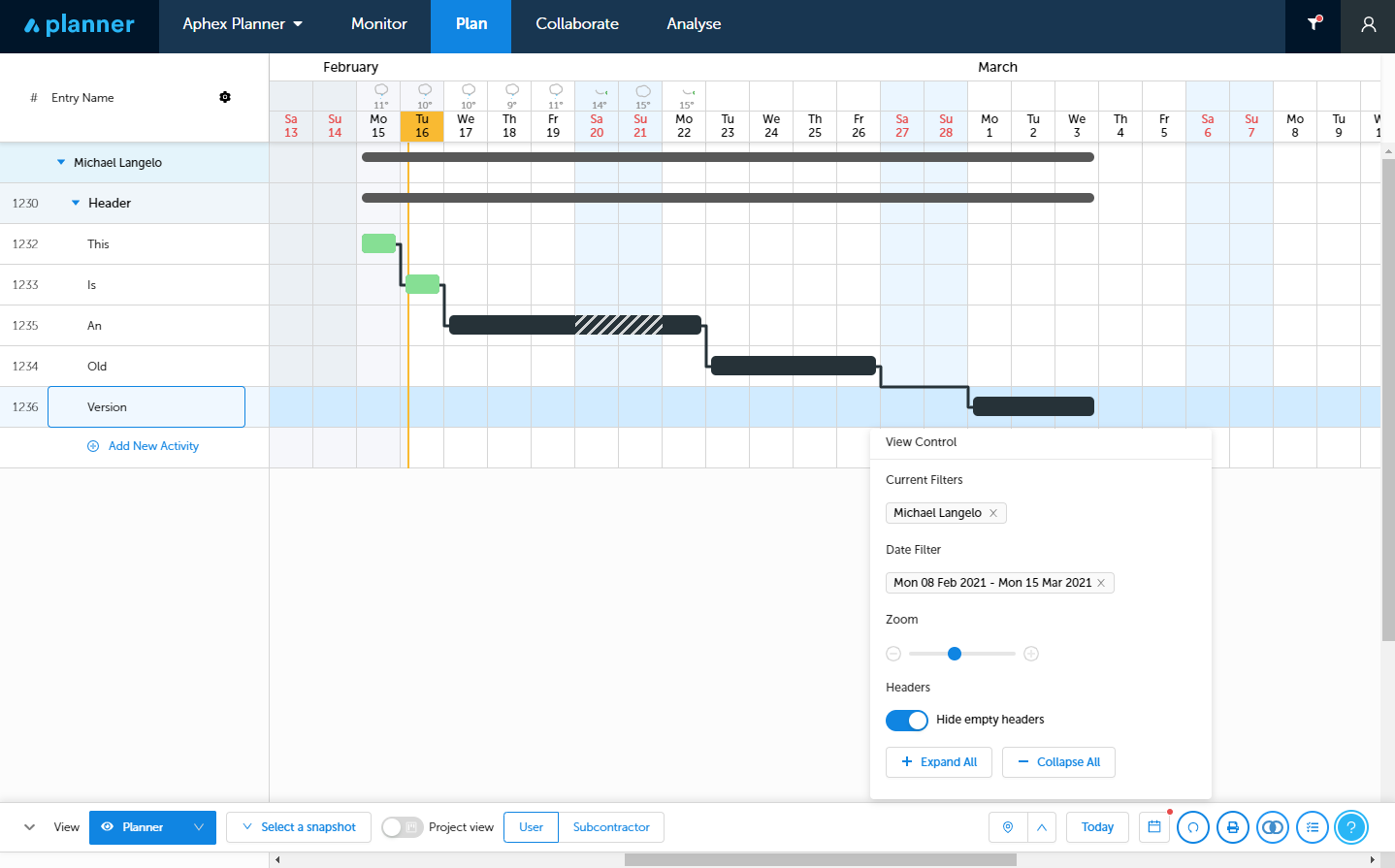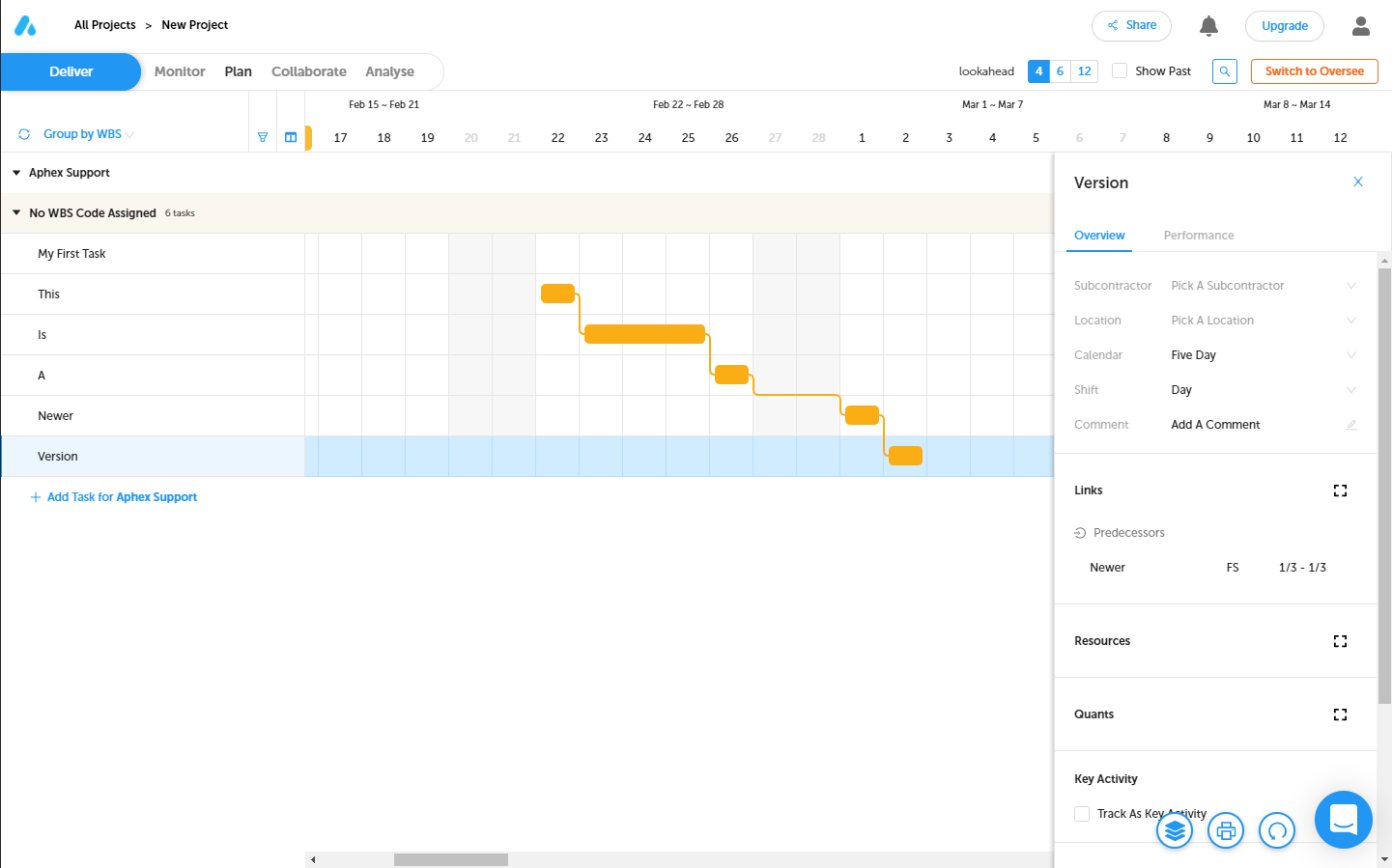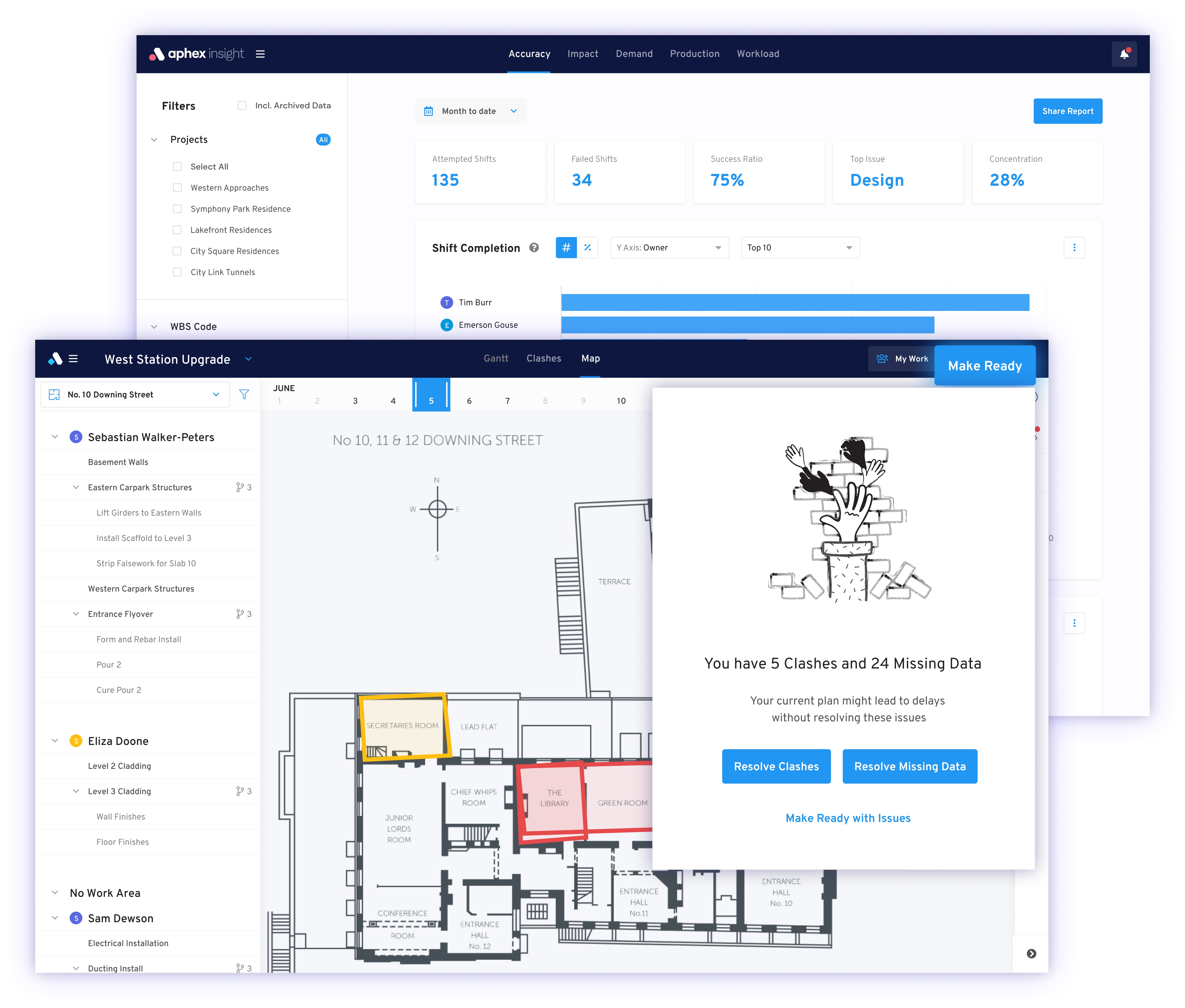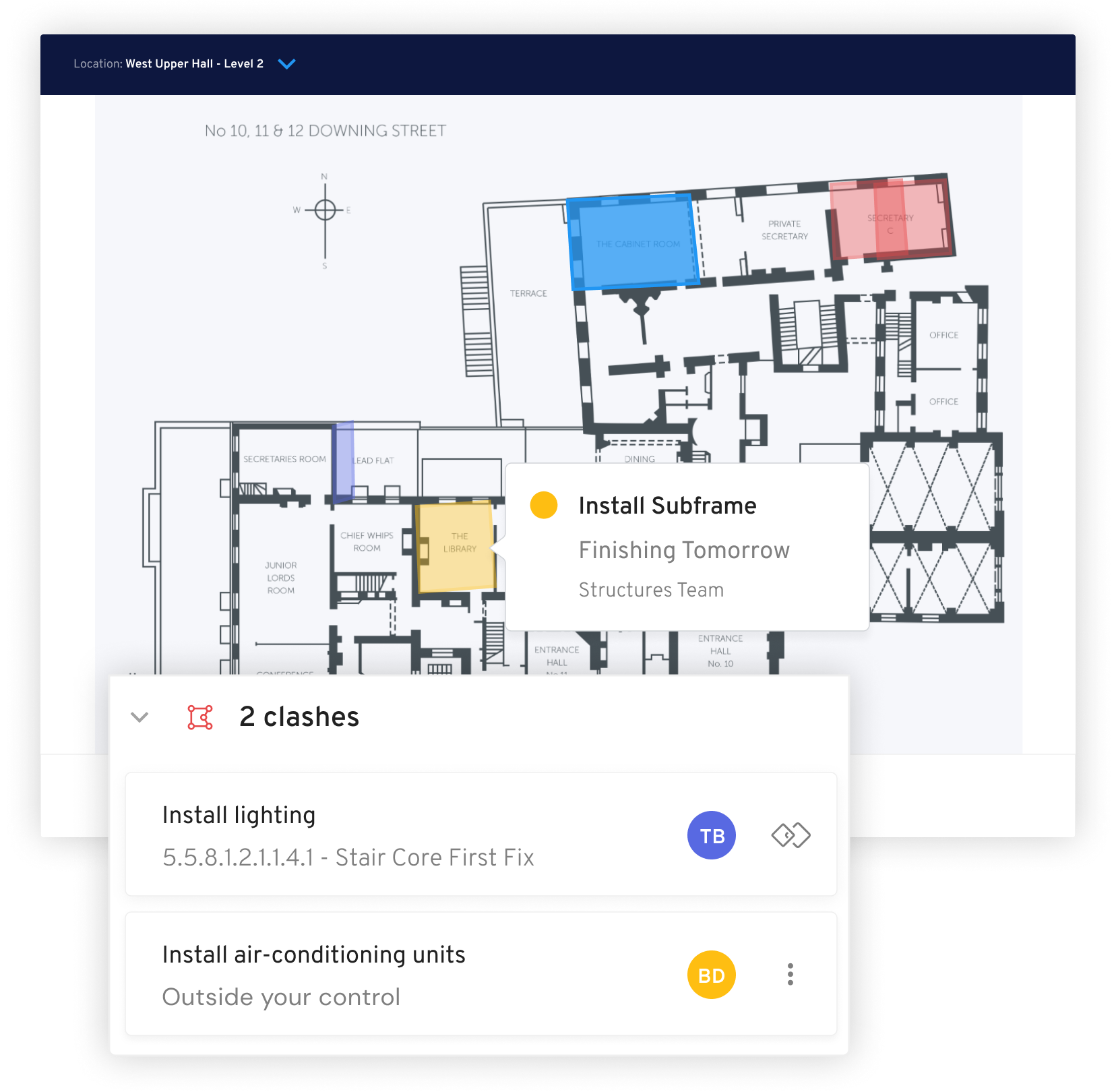Why communication is key to improving your construction project.
Communication breakdown causes of problems in every walk of life, luckily there are things you can do to stop it delaying your construction project.
In our previous lives as project managers, quantity surveyors and planners it was rare to stop and write about your last project or role, and even rarer to have the time for such reflection. Whilst time has not gotten any more abundant, it felt important to pause and document the Aphex journey over the last two years. Important for the Aphex team... yes, but also important for our users and the construction community. Not only because the journey has led us to today and the launch of the New Aphex, but also because the journey will set the direction that Aphex will continue to move in.
Unless you were one of the 15 users that started using Aphex Version 1 in late 2018 you have only been on part of the journey... undoubtedly the better part. So, by means of a summary for everyone else, the origins of Aphex can be summarised in an idea. Construction planning is disconnected. This idea appeared so obvious to us as construction people as well as everyone we worked with and spoke to at the time. With what seemed such an obvious problem, came the confidence that the solution was equally obvious. We needed to build a simple lookahead planning tool that was cloud based and connected via a single database. It had to be something as simple to use as excel given that was the primary tool of choice for engineers needing to quickly develop a gantt chart.

In late 2018 we launched Version 1 of Aphex Planner. We proudly showed it off to potential users in our home market of the UK. Confident that the pairing of an obvious problem and a simple solution made any adoption decision a "no brainer", we were surprised to learn very quickly that many of our potential customers seemed to want more. Aside from the usual trials and tribulations of a startup, we were hearing that we were missing critical features. Features we had never even contemplated developing for engineers, such as resource loading, wotif analysis and production rate tracking. And the more people we showed, the more "critical" features appeared to be missing... baselines, WBS trees... the list kept growing.
Whilst our first reaction was to frantically start pulling forward features from our product roadmap, something didn't feel right. How could site teams, used to building plans on spreadsheets or whiteboards, suddenly require such advanced planning features? These were features that already existed in the complex planning software that planners used to manage the project's master schedule. So, we began analysing all the feedback we had received and the behaviour of the users of our software. This uncovered two surprising insights... firstly, it was clear that almost all of it came from construction planners as opposed to our expected target persona of an engineer. Secondly, despite the feedback, people were definetly using our software. Whilst far from a success by anyone's definition, our initial launch had garnered frequent users... and they were almost exclusively planners.
We knew that most projects around the world are managed through some form of short term or lookahead planning process. We also knew that typically this was the domain of engineers or construction managers. However, the earliest adopters of our software were planners, so we lent into that. We started building and releasing the most important features for planners such as a WBS, importing and exporting tools. Surprisingly we saw more users. Even more surprisingly, we saw planners trying to onboard their engineers. At that point, we thought we had cracked it. We could build what planners want and they can onboard and train their engineers. So we kept going. In 2019 we released over 50 new features that were primarily targeted at our new high expectation persona of planner.

By late 2019 we had a solid base of projects in the UK using Aphex Planner, including some recent deployments on projects with 50-150 users. Suddenly, some cracks started to show. The larger projects, where planners were tremendous champions, were struggling to get adoption from their engineers. There were other signs too. Our Customer Success team was inundated with training and support requests from engineering teams across these same projects. Suddenly we were overextended running repeat 'small-group' training, advising and tracking process adoption, and ultimately working around the clock to make sure a handful of projects had successful deployments.
Why was the size of the project having such an impact on the deployment of our software? One important reason was that we had progressively built Aphex Planner into a tool for planners, a group very familiar with far more complex planning systems. In doing so, we had developed from the simple, "excel-killing tool for engineers” idea we started with. Combine any increased complexity in our software with the latent complexity of large projects with thousands of tasks, hundreds of workers on site each day and it becomes clear why engineers were left experiencing far too much friction in loading, finding and building out their plans.
So, as our Customer Success team continued to provide outstanding support, we again frantically built and released features to balance what we saw as almost competing requirements from planners and engineers. One group was eager for more powerful and complex features, the other was keen to update plans and get back to site. This culminated in the release of Aphex Planner Version 5 in early 2020. Among many other things, we introduced the concept of Mode. This allowed the software to switch between Deliver, an experience designed for an engineer, and Oversee which was designed for planners.
A few months into the deployment of Version 5, we had our eureka moment. In hindsight, its plainess was embarrassing, but for us at the time it was a quantum leap. We realised that lookahead planning was not a process owned or executed by any one person or role on a project. Successful lookahead planning is a coordinated dance involving engineers, planners, project managers, supervisors and the workforce. Like a dance, it has a rhythm or routine. For it to work, everyone needs to know not only their part but how it fits into everything else.
In March 2020 we had our vision... To be the platform where construction lookahead planning and communication happened, to put workflows at the core of everything and to facilitate the dance. In order to accomplish this goal, we had to start with a clean slate. No baggage of how we used to do something or compromising to avoid changing something we had already built. We decided to ‘bet the farm’. We would stop building and releasing any new features and instead secretly build a New Aphex from scratch. Fast forward almost a year later, with an immense amount of work from a great team we are launching an Aphex that isn’t for engineers or planners and doesn’t trade off competing goals. Instead, we are launching a platform that leans into the differences of our users and builds workflows to connect them.

The mission that guides everything that we do at AphexHQ is simple. We want to put teams back in control of how they plan and communicate work. In our experience as construction people, we have felt that sickly feeling of knowing when you are ‘behind the play’ and are slightly out of control. Even with better tools, we can see from the millions of task days completed in Aphex that a substantial amount of delay occurs because of issues like “poor communication” or “poor planning”. Fundamentally, these are issues borne out of the process of planning and communicating work rather than actual issues on site. Whilst project teams need tools that address project-specific delays such as slow design or scope change, it's on us to move the ball forward on process delays.
In the new Aphex, we have taken big swings at improving planning and communication. We have broken down this goal into two parts;
Poor planning understandably comes from time-poor individuals planning in isolation on a highly complex project. In traditional methods, not only are there cognitive limitations to the simultaneous constraints that can be balanced for those setting a plan, but there are structural limitations to how many of those constraints can actually be seen. In plain English, projects avoid lookahead planning in tools like P6 because it feels overly complex. By moving to simpler environments like a spreadsheet it's impossible to know if one plan impacts another by physically clashing or requiring the same resources. Unless this problem is solved, we continue to make plans that physically can’t happen (sorry - that was blatant marketing).
Our approach is to remove the complexity of large programmes and let teams plan in their own workspace. At the same time, we take the burden of tracking what's happening in the wider project and providing the right information needed to make decisions about the plan. At its extreme, we provide a single engineer with the ability to know about everything that's happening across a 10,000 activity programme whilst they worry about planning 50 tasks for the next month.

In order to make good plans, teams would traditionally spend hours in collaborative planning sessions working through sequences and interfaces on whiteboards or sticky notes. After those sessions, someone transposes all that information into a gantt chart and emails it out. Aside from the obvious inefficiency of this, the success of the whole operation is contingent on the emailed information filtering its way down to every crew, supplier or supervisor so they can actually understand their part of the plan. So much good planning effort goes to waste when this falls over. And it does fall over. Supply chains or site teams don't have the time to comb through aggregated plans to pick out the stuff relevant to them. If no-one knows what the plan is, is it worth having one?

So far, we have introduced new features to synchronise the readiness of everyone’s plan and then publish them to create an open and interactive plan accessible to anyone you need to communicate with. Our Published Versions allow your suppliers, site or client to be viewing and understanding the part of the plan that's relevant to them. We believe that this change is so important that we have kept it completely open. No sign-up required and no subscription cost for people that view your plans.
This is where our energy will continue to be focused - communicating plans to everyone involved in a project. We want to connect everyone on a project to the plan - specifically the part of the plan they care about.
Our journey to date has been fuelled and guided by users and customers. Both positive and “not so positive” feedback drives us every day. We know that the New Aphex is a bold change and we hope that we have delivered a massive improvement to construction teams.
As always, Happy Planning!
Jason
Communication breakdown causes of problems in every walk of life, luckily there are things you can do to stop it delaying your construction project.
The old ways of planning projects simply don't work as well as they should. Cloud based construction planning software can help improve performance...
Aphex Field helps connect site workers to engineers and planners. Read on to discover how it can help improve your project.
Be the first to receive all the latest tips, insights, and updates when you subscribe to the Aphex blog.